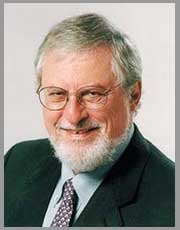Sherman Leonard Syme
Year: August 21st, 2003
Location: Berkeley, California
Interviewed by: Labarthe, Darwin
Abstract
For more than four decades Leonard Syme has been engaged in research into the social factors that influence cardiovascular disease (CVD) epidemiology. Here Syme discusses his education at Yale University in the first medical sociology graduate program and his early career with the Heart Disease Control Program of the Public Health Service (PHS) and the National Institutes of Health (NIH). In particular he discusses the role of the Human Ecology Study Section of the NIH in the formative years of non-infectious disease epidemiology. Syme also offers a detailed account of his work in the 1960s on NIHONSAN and the efforts of his graduate students Michael Marmot and Lisa Burton. He then reviews the evolution of psychosocial and sociocultural influences on CVD and general health. In the last third of the interview Syme tackles the future of epidemiology and proposes that epidemiologists study mechanisms of how social factors influence susceptibility and the influence of social factors beyond specific diseases and their devoted National Institutes. (KR/HB)
Quotes
“We [the Human Ecology Study Section] saw it as our mission to go out and get people interested and get people going. […] We’d go out on a site visit and tried to help the guy do it good.”
“Suppose you wanted to do a study on the health consequences of poverty. What institute at NIH would you send it to? […] They would send it to an institute of one or another disease focus. But by doing that you make it impossible to see the significance of these concepts. So, I think we’re at a turning point in our work. In fact I think that’s what the next major challenges will be.”
“My view is that we have three major problems in heart disease today. One problem is that the risk factors that we have devoted so much energy to – the established risk factors: cholesterol, blood pressure, smoking, physical activity, obesity, etc. – account for less than 50% of the heart disease that occurs. . and in the data that I’ve been looking at less than half of the people with these established risk factors developed heart disease. So that’s an important issue because it suggests that there are other things going on.
The second problem is even when we get people who have established risk factors it’s very hard to get them to change their behavior and I don’t have to tell you about the MRFIT story, . . . as you know, not very many people changed their behavior and the control group changed more than we had hoped for. It’s complicated. But knowing about the risk factors hasn’t solved the problem either.
The third problem is probably the most difficult and that is even if everybody did change their behavior who were at high risk, new people keep entering the at-risk population at an unaffected rate because we haven’t really done research on the determinants of risk factors. So it seems to me given these three problems there is lots of room for other approaches to the study of this disease.”
“Now I’m becoming a little bored with all of this population health and stuff because to me it’s old hat. I think we need to move on to the next challenges. To me the next major challenges are going to have to be to figure out how social factors get into the body to cause disease.”
Full Transcript Access
Full transcripts of interviews may be made available to those engaged with original materials for scholarly studies by contacting us.
